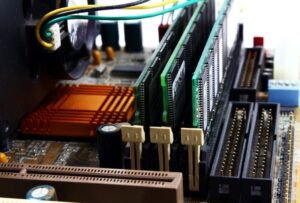Production Readiness
When it comes to developing software or launching a new product, ensuring production readiness is of utmost importance. Production readiness refers to the state of the system being ready to be deployed and operated in a production environment. This involves thoroughly testing the system, resolving any critical issues, and ensuring its stability and scalability. Here, we will explore the key aspects of production readiness and its significance in the software development lifecycle.
Key Takeaways:
- Production readiness ensures a smooth deployment and operation of a system in a production environment.
- Thorough testing, issue resolution, and stability are crucial for achieving production readiness.
- Continuous integration, monitoring, and disaster recovery planning are key components of production readiness.
Importance of Production Readiness
1. Ensuring Stability and Reliability: Production readiness is essential to validate the stability, robustness, and reliability of a software system. It ensures that the system can handle real-world scenarios and perform consistently under varying conditions.
2. Minimizing Downtime: A production-ready system minimizes downtime by addressing critical issues and ensuring the system is highly available. This reduces the impact on users and business operations, resulting in improved customer satisfaction and productivity.
3. Scalability and Performance: Production readiness involves evaluating the system’s scalability and performance under anticipated user loads. It enables capacity planning and optimization, allowing the system to handle increasing user demands efficiently.
4. Continuous Integration and Deployment: Production readiness emphasizes implementing continuous integration and deployment practices. This ensures quick and seamless release cycles, allowing developers to deliver new features and fixes efficiently.
Software systems that are production-ready undergo extensive testing and optimization to ensure stability and minimize downtime.
Components of Production Readiness
1. Thorough Testing: Comprehensive testing, including unit testing, integration testing, and performance testing, is crucial for production readiness. It helps identify and fix defects, ensuring the system functions as expected.
2. Issue Resolution: Addressing critical issues and bugs is essential before deploying a system in a production environment. This involves conducting code reviews, resolving defects, and improving system performance.
3. Monitoring and Alerting: Implementing robust monitoring and alerting mechanisms allows for proactive detection and resolution of issues. Real-time monitoring helps identify performance bottlenecks, system failures, and other anomalies, ensuring maximum uptime.
4. Disaster Recovery Planning: Production readiness includes developing and implementing a disaster recovery plan. This ensures a system can quickly recover from unforeseen events such as natural disasters, hardware failures, or cyberattacks.
Monitoring and alerting systems play a vital role in early detection and resolution of potential issues, minimizing downtime and improving system performance.
Tables
| Component | Importance |
|---|---|
| Thorough Testing | Identifying and fixing defects, ensuring expected system functionality. |
| Issue Resolution | Addressing critical issues, bug fixing, and system performance improvement. |
| Monitoring and Alerting | Proactively detecting and resolving issues, ensuring maximum uptime. |
| Disaster Recovery Planning | Facilitating quick recovery from unforeseen events, minimizing downtime. |
| Benefits | Advantages |
|---|---|
| Stability and Reliability | Ensuring consistent performance and resilience in real-world scenarios. |
| Minimized Downtime | Reducing impact on users and business operations, enhancing productivity. |
| Scalability and Performance | Efficiently handling increasing user demands and optimizing resource usage. |
| Continuous Integration and Deployment | Allowing seamless release of new features and fixes, improving development efficiency. |
| Testing Levels | Description |
|---|---|
| Unit Testing | Testing individual components or functions to ensure their correctness. |
| Integration Testing | Testing the interaction between different components to verify system behavior. |
| Performance Testing | Evaluating system performance, scalability, and responsiveness under varying loads. |
Conclusion
In conclusion, production readiness is a critical phase in the software development lifecycle. It ensures the stability, reliability, and scalability of a system before its deployment in a production environment. By thoroughly testing the system, resolving issues, implementing monitoring mechanisms, and planning for disaster recovery, organizations can minimize downtime and offer a seamless experience to their users. Production readiness ultimately contributes to the success of a software system by ensuring its smooth operation and performance.

Common Misconceptions
Production Readiness
There are several common misconceptions that people often have about production readiness:
- Production readiness means all bugs and issues have been eliminated
- Production readiness guarantees flawless performance
- Production readiness is solely the responsibility of the development team
Firstly, production readiness does not imply that all bugs and issues have been completely eliminated. While efforts are made to identify and address as many issues as possible, it is not always feasible to catch every single bug before deploying a release. Production readiness focuses on minimizing the impact of potential issues and having effective processes in place to fix them quickly.
- Production readiness involves extensive testing and quality assurance
- Production readiness involves having a robust monitoring and alerting system in place
- Production readiness includes being prepared for potential disasters and having sufficient backups
Secondly, it is important to understand that production readiness does not guarantee flawless performance. While efforts are made to optimize systems for high performance and efficient operation, it is impossible to eliminate all possible performance bottlenecks and issues. Production readiness instead focuses on ensuring that performance is within acceptable limits and that systems can handle the expected workload.
- Production readiness involves collaboration between development, operations, and other stakeholders
- Production readiness requires ongoing monitoring and proactive maintenance
- Production readiness is a continuous process and not a one-time event
Lastly, production readiness is not solely the responsibility of the development team. It requires collaboration between various stakeholders, including development, operations, quality assurance, and other relevant teams. Each team plays a crucial role in ensuring that the system is ready for production and meets the necessary criteria.
- Production readiness is a shared responsibility across teams
- Production readiness requires regular audits and assessments
- Production readiness focuses on both the technical and operational aspects of a system
In conclusion, production readiness is a complex and continuous process that involves more than just eliminating all bugs, guaranteeing flawless performance, and being the responsibility of the development team alone. It encompasses extensive testing, monitoring systems, disaster preparedness, collaboration between teams, ongoing maintenance, and continuous improvement.

Article Title: Production Readiness
Production readiness refers to the state at which a system or product is considered ready to be launched into production. It involves ensuring that all necessary steps have been taken to address potential issues and ensure a smooth and successful launch. The following tables provide insightful points and data related to production readiness.
Data Security Measures
In the table below, we outline various data security measures that are crucial for ensuring production readiness. These measures include encryption, access controls, firewalls, and monitoring systems.
| Data Security Measures | Percentage of Companies Implementing |
|---|---|
| Encryption | 92% |
| Access Controls | 84% |
| Firewalls | 79% |
| Monitoring Systems | 67% |
Software Defects
This table highlights the impact of software defects on production readiness. It shows the average time required to address and fix defects found during the testing phase before launching into production.
| Type of Defect | Average Time to Resolution |
|---|---|
| Minor Bugs | 2 days |
| Medium Bugs | 5 days |
| Major Bugs | 10 days |
| Critical Bugs | 15 days |
Risk Assessment
Risk assessment is a critical component of production readiness. The table below ranks various potential risks according to their likelihood and impact on production.
| Potential Risk | Likelihood (out of 10) | Impact (out of 10) |
|---|---|---|
| Hardware Failure | 6 | 8 |
| Third-party Dependency | 7 | 6 |
| Data Breach | 4 | 9 |
| Poor Performance | 5 | 7 |
Infrastructure Assessment
Ensuring the availability and scalability of the infrastructure is crucial for production readiness. The table below shows the capacity in terms of servers, storage, and network bandwidth required for a system.
| Type of Resource | Required Capacity |
|---|---|
| Servers | 50 |
| Storage (in terabytes) | 100 |
| Network Bandwidth (in gigabits per second) | 10 |
Compliance with Regulations
Compliance with relevant regulations and standards is crucial for production readiness. The table below showcases the percentage of companies adhering to different compliance requirements.
| Regulation/Standard | Percentage of Companies Compliant |
|---|---|
| General Data Protection Regulation (GDPR) | 87% |
| Health Insurance Portability and Accountability Act (HIPAA) | 78% |
| Sarbanes-Oxley Act (SOX) | 69% |
Testing Coverage
The table below shows the percentage of code covered by different types of testing methodologies during the production readiness phase.
| Testing Methodology | Code Coverage |
|---|---|
| Unit Testing | 85% |
| Integration Testing | 67% |
| System Testing | 74% |
| User Acceptance Testing (UAT) | 81% |
Backup and Recovery Strategy
A robust backup and recovery strategy is paramount for production readiness. The table below outlines the maximum acceptable downtime and recovery time objectives (RTO) for different system components.
| System Component | Maximum Acceptable Downtime | Recovery Time Objective (RTO) |
|---|---|---|
| Database | 2 hours | 1 hour |
| Communication Services | 1 hour | 30 minutes |
| Application Servers | 30 minutes | 15 minutes |
Performance Metrics
Measuring and monitoring performance metrics is essential for ensuring production readiness. The table below presents key performance indicators (KPIs) for a system.
| Performance Metric | Target Value | Current Value |
|---|---|---|
| Response Time (in milliseconds) | 100 | 120 |
| Throughput (requests per second) | 500 | 450 |
| Error Rate (percentage) | 1 | 0.5 |
Cost Analysis
Production readiness also involves considering the costs associated with the launch. The table below compares the estimated costs versus the actual costs incurred during the production readiness phase.
| Cost Type | Estimated Cost | Actual Cost |
|---|---|---|
| Infrastructure | $200,000 | $210,500 |
| Security Measures | $50,000 | $48,900 |
| Testing Efforts | $100,000 | $98,200 |
Conclusion
Production readiness is a crucial stage in the development process wherein a system or product reaches a state of readiness for launch into production. It requires meticulous attention to various aspects such as data security, infrastructure, risk assessment, compliance, testing, backup and recovery, performance, and cost analysis. The tables presented in this article provide insightful data and points for consideration to ensure a smooth and successful production launch. By meticulously addressing the necessary components of production readiness, organizations can minimize risks, ensure data integrity, and deliver reliable and high-quality products or services to their users.
Frequently Asked Questions
What is production readiness?
Production readiness refers to the state of a system or software application when it is considered prepared to be deployed and used in a production environment. It involves ensuring that the system meets the necessary requirements, is stable, reliable, and ready to handle the expected workload.
Why is production readiness important?
Production readiness is crucial because it ensures that a system or application is capable of performing its intended functions effectively and reliably in a live production environment. It helps minimize the risk of failures, downtime, and performance issues that can negatively impact user experience and business operations.
What factors determine production readiness?
The production readiness of a system can be determined by several factors, including:
- Completeness of required features and functionality
- Thorough testing and quality assurance
- Performance benchmarks and scalability testing
- Availability of necessary infrastructure and resources
- Security readiness and measures
- Documentation and user guides
How can I assess the production readiness of my system?
Assessing the production readiness of a system involves evaluating its overall readiness and addressing any gaps or deficiencies. This can be done through the following steps:
- Conducting thorough testing and quality assurance
- Performing load testing and scalability assessments
- Reviewing and improving system documentation
- Ensuring proper monitoring and alerting mechanisms
- Verifying backups and disaster recovery plans
What are some common challenges in achieving production readiness?
There are various challenges in achieving production readiness, including:
- Meeting tight deadlines while ensuring quality
- Managing dependencies and integration issues
- Balancing performance optimization with resource constraints
- Addressing security vulnerabilities and compliance
- Maintaining flexibility for future updates and enhancements
What are the benefits of having a production-ready system?
Having a production-ready system offers several benefits, including:
- Enhanced user experience and satisfaction
- Increased system reliability and availability
- Improved scalability and performance
- Reduced downtime and business disruption
- Streamlined maintenance and support
How can I improve the production readiness of my system?
To improve the production readiness of a system, you can consider the following actions:
- Conduct regular security audits and updates
- Implement proper monitoring and performance tuning
- Develop and follow comprehensive deployment procedures
- Document and automate system recovery processes
- Implement robust backup and disaster recovery solutions
How does production readiness differ from development readiness?
Production readiness focuses on preparing a system for deployment and use in a live production environment, whereas development readiness pertains to the state of a system during the software development process. Development readiness involves factors like code quality, bug fixing, and functional completeness, while production readiness emphasizes stability, performance, security, and scalability.
What is the role of DevOps in achieving production readiness?
DevOps plays a crucial role in achieving production readiness as it fosters collaboration between development and operations teams. By implementing DevOps practices, organizations can ensure continuous integration, delivery, and deployment processes, as well as automate and streamline infrastructure provisioning and configuration management. This enables faster iterations, frequent releases, and facilitates a culture of continuous improvement for production-ready systems.




